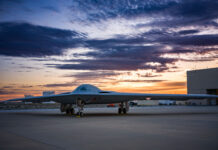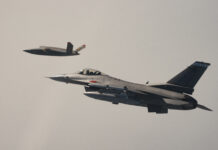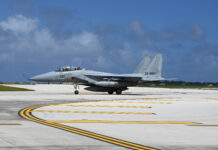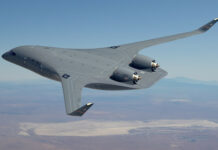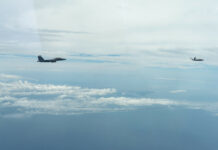The US Air Force recently launched Agility Prime, a non-traditional programme seeking to accelerate the commercial market for advanced air mobility vehicles. Agility Prime is the Air Force’s effort to support the booming commercial investment in eVTOLs. The military’s attention to this area of technological development is due to its numerous military applications.
In February 2020, the United States Air Force (USAF) initiated the Agility Prime programme as “a non-traditional programme seeking to accelerate the commercial market for advanced air mobility vehicles.” The immediate focus of the programme is DoD-sourced investment in development and testing of so-called flying cars, both manned and unmanned. Such vehicles have been studied for years with an eye to civilian “Urban Air Mobility” (UAM) applications in urban environments, from high-end executive airlift between high-rise buildings (“air taxis”), to deployment as infrastructure surveillance aircraft. Such aircraft also have military potential.
Agility Prime is financed through AF Ventures, USAF’s venture capital fund, and managed through the Air Force’s technology innovation organization AFWERX. USAF has invested US$25M in Agility Prime for 2021 alone, with additional funding planned in future years. By supporting commercial technology ventures, the military hopes to further advances in military-capable technologies at considerably lower cost – and with greater flexibility – than could be expected through a dedicated military prototyping programme.
For industry, the DoD incubator function – including the outlook for an initial market – has boosted the ability to focus on products which might otherwise be considered a poor investment risk. “Our partnership with AFWERX and the Air Force has been transformative,” wrote JoeBen Bevirt, CEO of Joby Aviation, in a December press release. This cooperation “has given us access to facilities, resources, and equipment that accelerated testing and allowed us to prove out the reliability and performance of our aircraft.”
To ensure swift results, the programme is geared toward technologies which are approaching commercial readiness within a roughly 36 month window. Agility Prime is currently in the middle of the “air race to certification,” a three-phase path to military flight certification and potential procurement of one or more operational systems. The “air race” is scheduled to run through December of this year.
Technology Goals and Military Applications
The immediate goal of Agility Prime is to mature technology capable of producing electrically powered vertical take-off and landing (eVTOL) aircraft. This type of aircraft is considered particularly suitable for urban operations. Electric power systems would significantly reduce noise and heat signature compared to combustion engines. As eVTOL aircraft are expected to utilise smaller rotor systems than conventional helicopters, they would also display improved aerodynamic properties in confined urban terrain, and have a significantly reduced risk of rotors catching on buildings, trees or power lines. They would also be easy to operate, even by personnel with no pilot training. Operating modes will include manned, remotely controlled, and autonomous.
AFWERX is coordinating with the Air Force Warfighting Integration Capability group to develop up to 20 potential mission profiles for USAF, but also for the US Marine Corps and Coast Guard. Potential applications being discussed include short-range cargo transport/battlefield resupply, search and rescue, medevac, installation security, and reconnaissance. Previous suggestions have included special operations and urban assault.
Given the variety of missions and the option for autonomous operations, USAF is avoiding the conventional “flying car” designation in favour of the acronym ORB (which, depending on who is speaking, can stand for Organic Resupply Bus, Operational Readiness Bus or Open Requirements Bus.) USAF chose the “Bus” designation as a play on the Universal Serial Bus or USB of computer technology, reflecting the wide application potential and flexibility of the new air vehicles.
USAF is pursuing ORBs in three categories:
- manned with a capacity of 3-8 passengers, with a minimum range of 160 km, a top speed in excess of 160 kph, and a flight duration above 60 minutes
- manned, 1-2 person capacity, with 16+ km range, 70+ kph speed, and 15+ minutes endurance
- unmanned with a payload capacity of 230 kg, 320+ km range, 160+ kph speed, and 100+ minutes endurance
Leading Contenders
Some 27 companies have proposed their flying systems for Agility Prime. To date, the Air Force has identified six of these firms as viable partners for the eVTOL programme:
Beta Technologies
Beta Technologies’ ALIA aircraft has a capacity of six people and a projected range of 450 km. The company’s ALIA-250 variant is already on the commercial market. Private transport firm Blade Urban Air Mobility ordered 20 units in April of this year. Courier service UPS has ordered 10 units of the cargo-configured variant, with an option for 150. Deliveries under both contracts are to begin in 2024, with operations beginning in 2025.
Elroy Air
According to the manufacturer, the optionally manned CHAPARRAL will have a payload capacity of 165 kg and approximately 500 km range. First flight of the prototype was in August 2019. The company has established a chain of charging stations along its proposed test route between Springfield, Ohio and Plattsburgh New York, a distance of circa 1,000 km.
The S4 is the largest eVTOL aircraft being considered under Agility Prime. It carries a pilot plus four passengers, making it suitable for tactical operations. The S4 has six tiltrotors, which transition from vertical to horizontal mode once operational altitude is reached. Joby’s goal is a speed of circa 320 km and around 250 km range on a single battery charge. In December 2020, the S4 became the first Agility Prime aspirant to receive USAF’s military airworthiness certification.
LIFT Aircraft
The single-seat HEXA has a cumulative payload capacity (passenger and cargo together) of 165 kg. Propulsion is achieved through 18 small rotors attached to a honeycomb-shaped frame above the egg-shaped cabin. The carbon-fibre fuselage sits atop four perimeter floats, which allow the craft to land on water as well as land. The 196-kg LIFT cites a target speed of circa 130 kph. Mission endurance is currently only 15 minutes. The HEXA was the first of the competing prototypes to be featured at a flight demonstration for USAF leaders in August 2020.
Moog
The SUREFLY quadcopter seats two. Each of the four propeller arms has an electric engine powering two contra-rotating propellers. The SUREFLY is the only hybrid system among the featured prototypes; the electric engines are powered by a gas turbine, switching to a battery pack for the final flight phase. Endurance and range are given as 90 minutes and 110 km, respectively. The initial design has a payload capacity of 180 kg. An advanced concept aims to increase this to 300 kg.
Phenix Solutions
The twin-bladed MONO 550 can fly for 90 minutes, with a top speed of nearly 150 kph and a range of over 220 km.
Liquid Piston
For military applications, the eVTOL concept has one downside. Reliance on electric propulsion limits the flexibility to operate in austere environments. Even if portable field generators are available, recharging batteries will also take longer than refuelling conventional helicopters, potentially reducing operational tempo and increasing vulnerability. In March, AFWERX awarded Liquid Piston Inc. a Phase I Small Business Technology Transfer contract for the firm’s X-Engine. This miniaturized rotary internal combustion engine could be paired with an on-board generator to charge an eVTOL’s battery in flight, or connect directly to the electric drive engine.
Testing Programme
Since eVTOL systems will all be relatively short-ranged, they will need to be transported to their operational zone. In March 2021, USAF’s 355th Wing (Davis Monthan AFB, Arizona) transported a LIFT HEXA via C-130 to prove the craft is robust enough to survive tactical airlift and be operational after offloading. Preparing and loading the eVTOL took 40 minutes, but once a routine is established, the procedure should take 15 minutes, according to the loadmaster in charge of the test.
In May 2021, the 355th Wing will deploy HEXA for Operation Bushwhacker, an annual exercise held in the Arizona desert. The eVTOL prototype will be tested for its suitability for austere, hostile environments. Missions will include combat S&R, aerial resupply, and security surveillance over airfields. The USAF’s 621st Contingency Response Wing at Joint Base McGuire-Dix (New Jersey) plans to start integrating additional ORBs into exercises by the end of this year. This will allow USAF to assess training and maintenance requirements as well as operational suitability. USAF expects to transition ORBs to an acquisition programme in 2023.
Next Steps
Assuming that Agility Prime proves successful, AFWERX plans to adopt the concept to researching other dual-use technologies. High-priority fields would include fuel-cell technology, artificial intelligence, and virtual reality training systems. The recently established Space Force is considered a likely beneficiary of future Prime programmes, which might develop satellite-refuelling capabilities, facilitate a space-based internet, or simplify space-debris removal. “It has to be an area that has strategic importance, both to the commercial sector and to the government sector,” said Colonel Eric Felt, head of the Air Force Research Laboratory’s space vehicles directorate. To be relevant, the programmes must be chosen so that the government’s unique science and engineering capabilities make an actual difference to the existing civilian research project, Felt emphasised.
Sidney Dean





